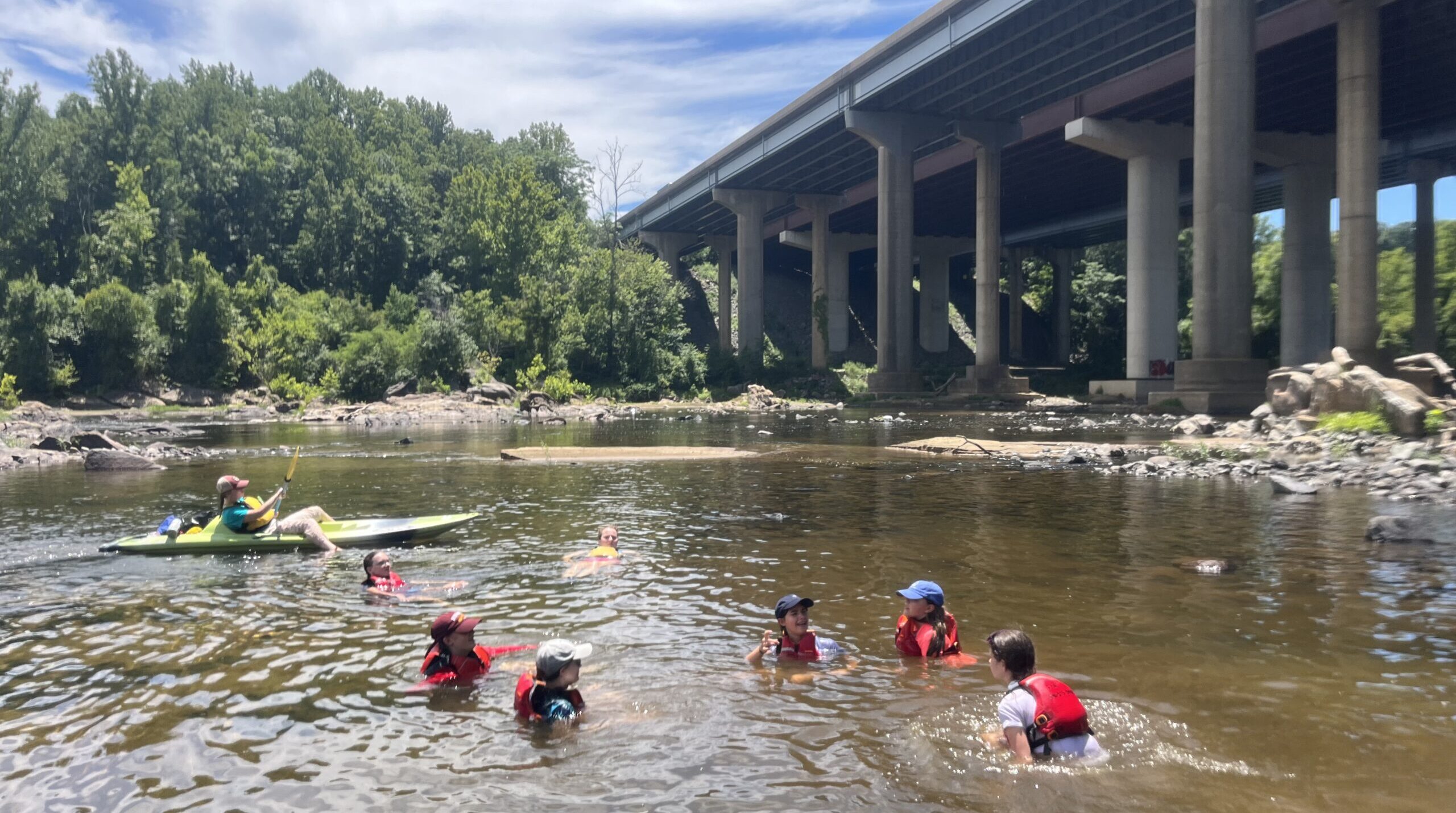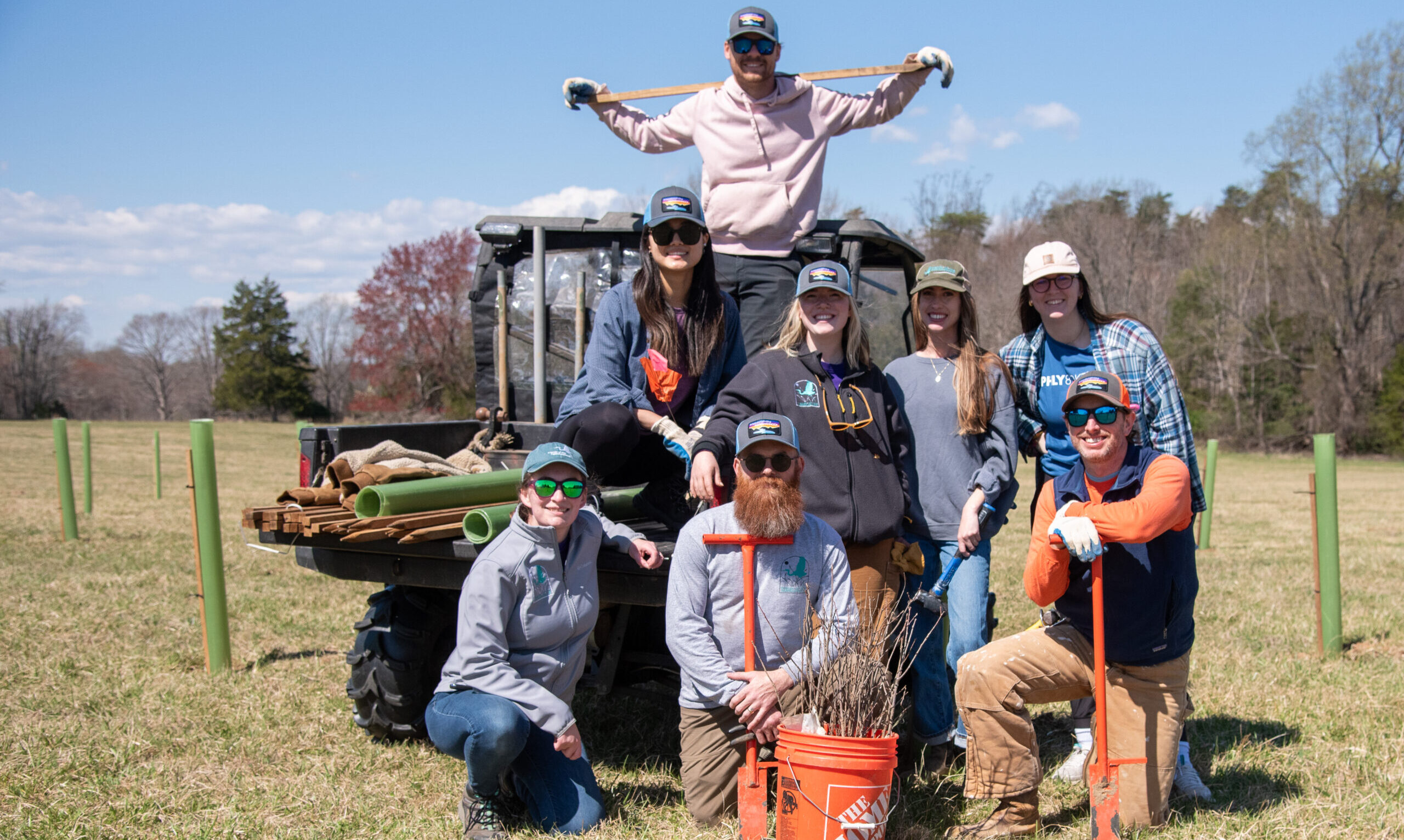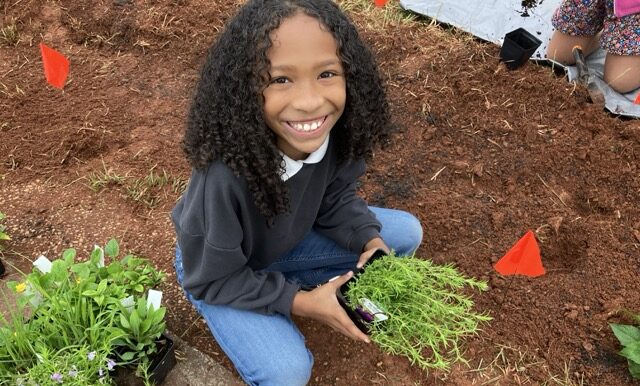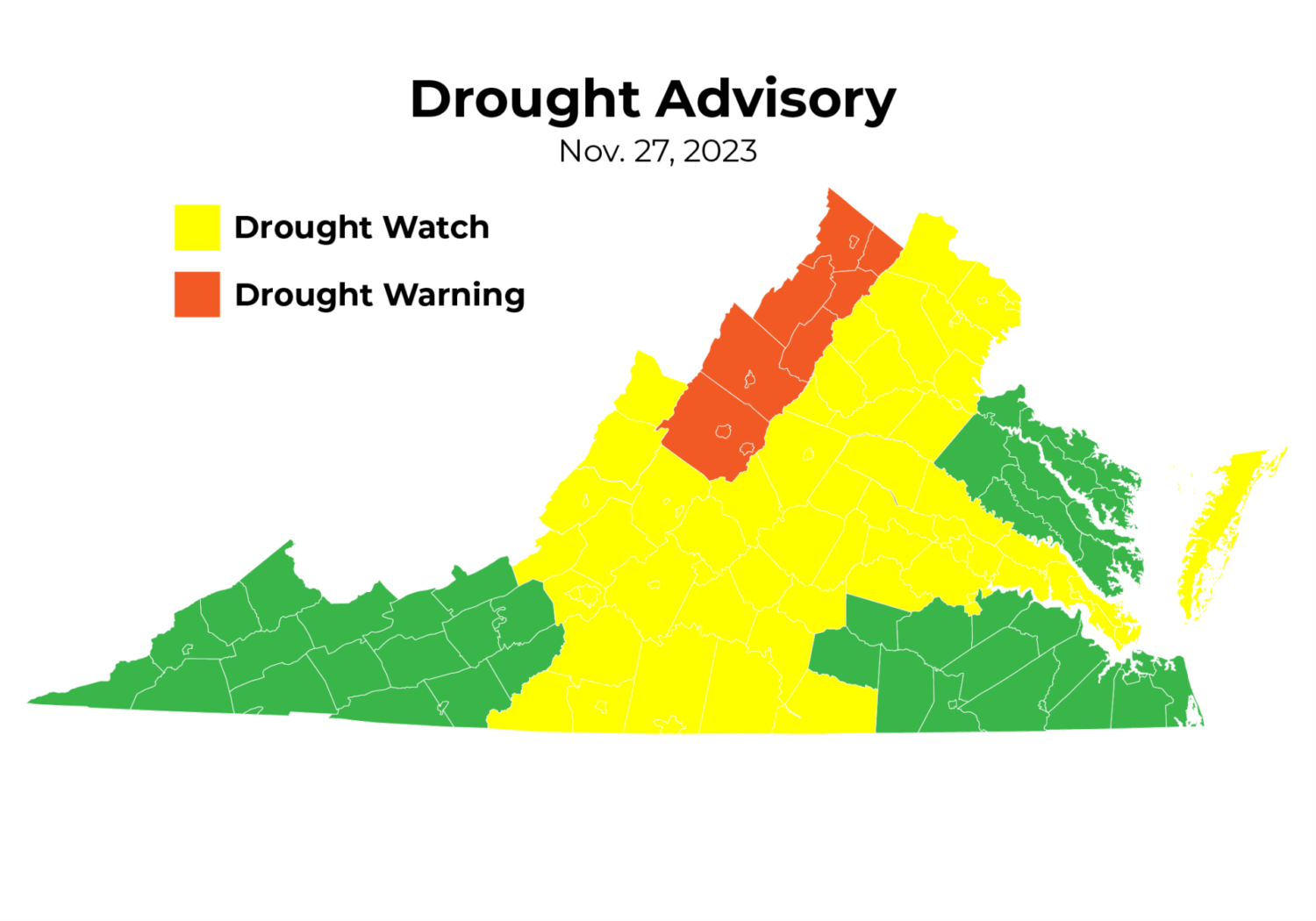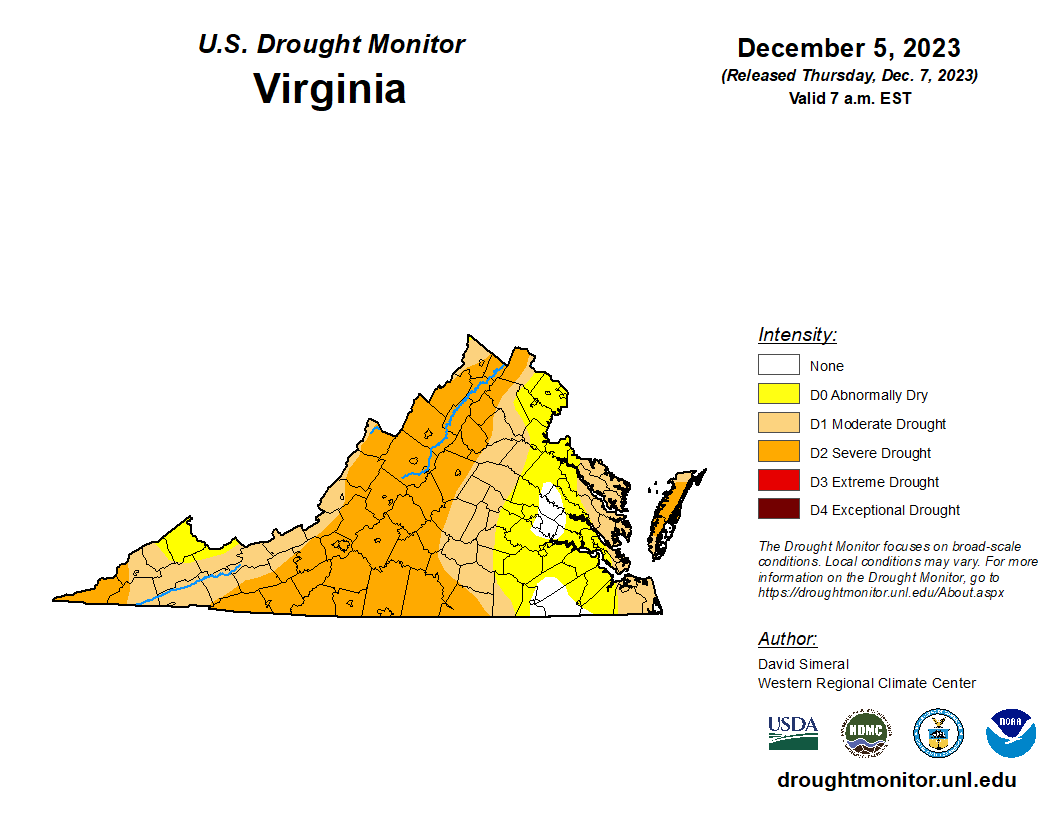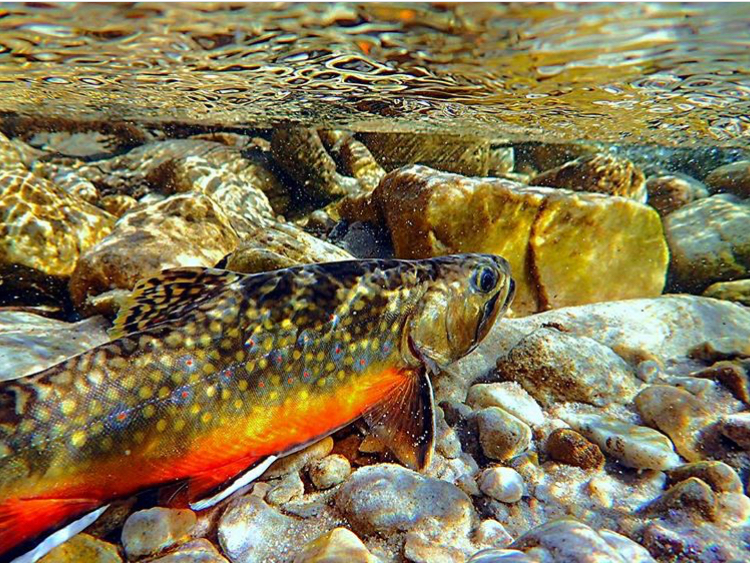Last week, the Virginia Department of Environmental Quality (VA DEQ) and the Virginia Drought Monitoring Task Force expanded the drought advisory to 42 additional counties, many of which reside in the central Virginia region. While recent showers over the last few weeks may have given the illusion that our longstanding drought was improving, stream flows remain less than the 5th percentile in the Shenandoah, Northern Piedmont, and Northern Virginia regions (DEQ 2023).
The recent drought announcement happens to coincide with regional water supply planning amendments recently approved by Virginia’s State Water Control Board, which mandates collaborative water planning efforts among local governments within the Rappahannock River basin. This requirement is designed to address concerns related to water availability and promote sustainable water usage.
According to the U.S. Drought Monitor, as of November 28, 2023, 96.29% of Virginia is experiencing drought conditions. This is a significant increase from November 2022, when only 36.43% of the state was affected by drought. The majority of the affected areas are classified as D2, indicating a severe drought. Virginia’s land and population is currently facing significant water scarcity and potential impacts on various sectors such as agriculture, industry, and residential water supply.
The recent advisory from the DEQ has placed several counties along the Rappahannock River on a drought watch. This heightened level of drought conditions is significantly impacting water resources, particularly in regions where the Rappahannock River plays a crucial role in supplying water for agricultural, industrial, and residential purposes. The consequences of the drought extend beyond our water needs, but also pose a serious threat to aquatic ecosystems.
The diminished flow levels in the Rappahannock River have created challenges for aquatic life. The adverse effects are not limited to disruptions in habitats, which can impact breeding grounds for fish and other aquatic organisms. Lower water levels can also lead to increased water temperatures and reduced oxygen levels, further stressing and harming fish populations. The overall health of aquatic ecosystems is at risk due to the effects of the on-going drought conditions.
Friends of the Rappahannock will continue to focus on regional water supply planning by collaborating with regional governments and stakeholders in order to prioritize water conservation, encourage responsible land use, and monitor pollution levels. By doing so, we can mitigate the adverse effects on the many beneficial uses the Rappahannock River provides, including aquatic life and preserving the ecological balance of the Rappahannock River.
Sources:
Calos, I. (2023, November 27). Drought Advisory Update. The Virginia Department of Environmental Quality. https://www.deq.virginia.gov/Home/Components/News/News/213/16
Paullin, C. (2023, December 6). Virginia local governments will now have to plan for water supply regionally. Virginia Mercury. https://www.virginiamercury.com/2023/12/06/virginia-local-governments-will-now-have-to-plan-for-water-supply-regionally/
Jarvis, K. (2023, November 27). 2023 Drought: Will the fish be back? Madrapp Recorder. https://madrapp.com/drought-will-the-fish-be-back-p5923-172.htm#
Western Regional Climate Center, NOAA/NCEI, Simeral, D., & Heim, R. (2023). Virginia. In U.S. Drought Monitor. U.S. Drought Monitor. https://droughtmonitor.unl.edu/CurrentMap/StateDroughtMonitor.aspx?VA
Written by Conservation Fellow, Gabrielle Domina. Last Updated December. 7, 2023

